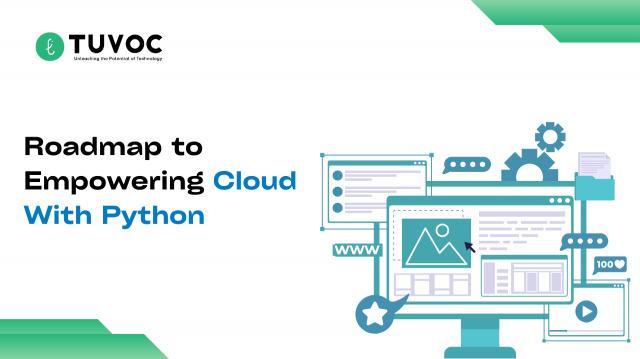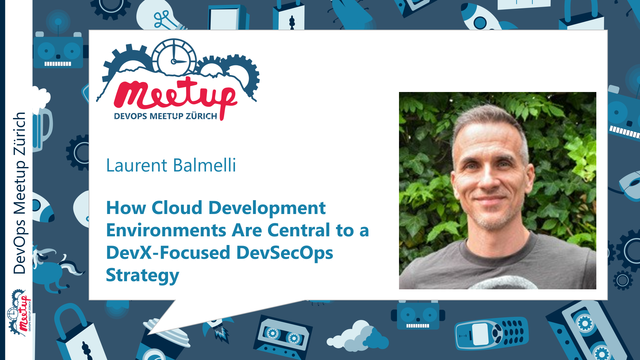In the accelerated dynamic setting of software development, organisations need to be agile and innovative to stay competitive. Traditional Continuous Integration and Continuous Deployment (CI/CD) setups are evolving into more dynamic Internal Developer Platforms (IDPs). This transformation allows developers to access the tools they need to innovate quickly and efficiently. An IDP centralises and streamlines the development process, providing a unified interface and automated workflows that significantly enhance developer productivity.
Key Challenges Addressed by Modern IDPs
- Low Productivity and Innovation: Developers often spend excessive time on infrastructure and configuration management, leading to burnout and reduced creativity. By automating these tasks, IDPs allow developers to focus on writing code and innovating.
- Lack of Self-Service: Traditional setups require developers to wait for Ops teams to provision resources, causing delays and frustration. IDPs provide self-service capabilities, enabling developers to access the resources quickly and easily as they need.
- High Cognitive Load: Developers juggle multiple interfaces and tools, which increases cognitive load and decreases productivity. IDPs offer unified interfaces and dynamic configuration management to streamline workflows and reduce complexity.
- Lack of Standardisation: Static CI/CD setups often lead to an explosion of scripts and configurations, making maintenance difficult. IDPs enforce standardisation through dynamic configuration management, significantly reducing complexity and ensuring consistency.
Design Principles for Effective IDPs
According to industry best practices, several key design principles ensure the effectiveness of an IDP:
- User-Centric Design: Developers are the primary users of an IDP. Their needs should drive the design and feature prioritisation to ensure the platform is fit for purpose and fully self-service.
- Operate Like a Startup: A small, central platform team should own the IDP, ensuring it is easily consumable and meets developers’ needs.
- Golden Paths: While IDPs should provide recommended paths for common tasks, they should not be restrictive. Developers should have the freedom to choose their preferred abstraction level.
- Dynamic Configuration Management: This principle reduces configuration complexity by generating application and infrastructure configurations dynamically during deployment, ensuring policies and standards are enforced automatically.
- Code as the Single Source of Truth: Keeping code as the single source of truth ensures consistency and reduces the risk of errors.
- Assume Brownfield Scenarios: IDPs should integrate with existing tools and workflows, leveraging open-source tooling and a cloud-native approach where possible.
Architectural Components of an IDP on AWS
An effective IDP on AWS consists of several key components across different “plane levels”:
- Developer Control Plane:
- IDE: Developers use tools like Visual Studio Code for coding.
- Version Control: GitHub is used to store and manage code.
- Workload Specifications: Tools like Score allow developers to define workloads in an environment-agnostic way.
- Integration and Delivery Plane:
- CI/CD: GitHub Actions handles continuous integration, while the platform orchestrator (e.g., ArgoCD) manages continuous delivery.
- Container Registry: Amazon ECR stores and manages container images.
- Resource Plane:
- Compute and Storage: AWS services like EKS (for Kubernetes) and RDS (for databases) provide the necessary infrastructure.
- Networking: Services like Amazon Route 53 manage DNS and routing.
- Security Plane:
- Secrets Management: Hashicorp Vault secures and manages sensitive information.
- Monitoring and Logging Plane:
- Observability: Amazon CloudWatch provides real-time monitoring and logging.
Benefits of an Enterprise-Grade IDP
Implementing an IDP using the described architecture offers several key benefits:
- Increased Developer Productivity: By automating repetitive tasks and providing self-service capabilities, developers can focus more on coding and less on managing infrastructure.
- Improved Standardisation: Dynamic configuration management enforces standards and reduces the complexity of configurations.
- Enhanced Observability and Security: Integrated monitoring and logging, along with robust secrets management, provide better oversight and security for applications.
Diagrams
Overview of the IDP Architecture on AWS
- Description: A high-level diagram showing the various planes (Developer Control Plane, Integration and Delivery Plane, Resource Plane, Security Plane, and Monitoring and Logging Plane) and how they interact with each other.
- Components:
- Developer Control Plane: IDE, GitHub, Workload Specifications (Score)
- Integration and Delivery Plane: GitHub Actions, ArgoCD, Amazon ECR
- Resource Plane: AWS EKS, RDS, S3
- Security Plane: Hashicorp Vault
- Monitoring and Logging Plane: Amazon CloudWatch
+-----------------------------------------------+| Internal Developer Platform |+-----------------------------------------------+| Developer Control Plane || +-----------------------------+ || | IDE (VS Code) | || | GitHub | || | Workload Specifications | || | (Score) | || +-----------------------------+ |+-----------------------------------------------+| Integration and Delivery Plane || +-----------------------------+ || | CI/CD (GitHub Actions) | || | Orchestrator (ArgoCD) | || | Container Registry (ECR) | || +-----------------------------+ |+-----------------------------------------------+| Resource Plane || +-----------------------------+ || | Compute (EKS) | || | Storage (RDS, S3) | || | Networking (Route 53) | || +-----------------------------+ |+-----------------------------------------------+| Security Plane || +-----------------------------+ || | Secrets Management (Vault) | || +-----------------------------+ |+-----------------------------------------------+| Monitoring and Logging Plane || +-----------------------------+ || | Observability (CloudWatch) | || +-----------------------------+ |+-----------------------------------------------+
Developer Workflow Diagram
- Description: A flowchart illustrating the developer’s workflow from writing code to deployment.
- Steps:
- Code written in IDE (e.g., Visual Studio Code)
- Code pushed to GitHub
- CI/CD pipeline triggered by GitHub Actions
- Container images stored in Amazon ECR
- ArgoCD deploys to AWS EKS
- Monitoring via Amazon CloudWatch
+-------------------------+| Write Code in IDE || (VS Code) |+-----------+-------------+ | v+-----------+-------------+| Push Code to GitHub |+-----------+-------------+ | v+-----------+-------------+| Trigger CI/CD Pipeline || (GitHub Actions) |+-----------+-------------+ | v+-----------+-------------+| Store Container Image || in Amazon ECR |+-----------+-------------+ | v+-----------+-------------+| Deploy with ArgoCD to || AWS EKS |+-----------+-------------+ | v+-----------+-------------+| Monitor with CloudWatch|+-------------------------+
Dynamic Configuration Management Process
- Description: A diagram showing how dynamic configuration management works within the IDP.
- Components:
- Developers define workloads using Score
- CI/CD pipeline generates configurations dynamically
- Deployment managed by ArgoCD
- Configurations stored in a central repository
+-----------------------------------------------+| Developer || +-----------------------------+ || | Define Workloads | || | (Score) | || +-----------------------------+ |+-----------------------------------------------+ | v+-----------------------------------------------+| CI/CD Pipeline || +-----------------------------+ || | Generate Configurations | || | Dynamically | || +-----------------------------+ |+-----------------------------------------------+ | v+-----------------------------------------------+| Deployment Orchestrator || +-----------------------------+ || | Deploy Configurations | || | (ArgoCD) | || +-----------------------------+ |+-----------------------------------------------+ | v+-----------------------------------------------+| Configuration Repository || +-----------------------------+ || | Store Configurations | || +-----------------------------+ |+-----------------------------------------------+
Security Integration Diagram
- Description: Show how security is integrated into the IDP.
- Components:
- Hashicorp Vault managing secrets
- Secure access to AWS resources
- Security policies enforced through dynamic configurations
+-----------------------------------------------+| Internal Developer Platform |+-----------------------------------------------+| +-----------------------------+ || | Hashicorp Vault | || | (Secrets Management) | || +-----------------------------+ || | || v || +-----------------------------+ || | Secure Access to AWS | || | Resources | || +-----------------------------+ || | || v || +-----------------------------+ || | Security Policies | || | (Dynamic Configurations) | || +-----------------------------+ |+-----------------------------------------------+
Conclusion
Transitioning to a modern IDP is crucial for organisations looking to stay competitive in the software development landscape. By adopting the outlined design principles and leveraging AWS services, organisations can build a dynamic, scalable, and secure IDP that enhances developer productivity and accelerates innovation.
For those ready to embark on this journey, the next steps involve assessing current infrastructure, defining requirements, and gradually integrating the components of the IDP into existing workflows. By doing so, organisations can achieve a seamless transition and unlock the full potential of their development teams.
Join Now For Free
https://itservice.guru/building-an-enterprise-grade-internal-developer-platform-on-aws/
#AmazonWebServices #Automation #AWS #CloudDevelopment #CloudSecurity #Development #DevOps #Innovation #Security





